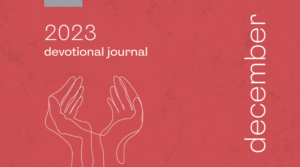Deeper ReflectionDaniel 10 to 12 is to be viewed as “one single, climactic visionary
experience”
32 of Daniel. Daniel’s visionary experience began with
him standing “by the bank of the great river, that is, the Tigris” (v.4)
and ended with him and two heavenly beings standing by “the bank
of the river” (Dan 12:5). And a “man dressed in linen” was present at
the beginning (v.5) and at the end (Dan 12:6-7). Daniel’s vision may be
outlined in terms of six key ideas.
The future of God’s people: Daniel 10 to 12 is “the vision [that] pertains to the days yet future,” and it is about “what will happen to your
people [Israel] in the latter days” (v.14). This vision expands on certain
themes in Daniel’s vision of the “Seventy Weeks” decreed for God’s
people (Dan 9:24-27). In the vision, a particular focus is given to the
conflicts of two Greek kingdoms. Daniel 11:2-12:4 “portrays a history
that would stretch into the future beyond Daniel”
33 . Alexander the Great overthrew Persia, and after his death, his kingdom was “broken up and parceled out” into four kingdoms (Dan 11:2-4). Daniel 11:5-45 outlines “the cycle of plots and schemes and battles”
34 between two post-Alexander Greek kingdoms in the South – the Ptolemies in Egypt, and the North
– the Seleucids in Syria. This had profound effects on the people of
God, Israel, who had returned to their land (Ezr and Neh). The land of
Palestine – “the Beautiful Land” (Dan 11:16, 41) – lay between these two
rival kingdoms, and as a result, “the fate of the Jews” was “at the mercy of
one or the other”
35 .
31 1 Timothy 4:1; 2 Peter 2:1
32 Christopher J. H. Wright, 212
33 Christopher J. H. Wright, 221
34 Christopher J. H. Wright, 222
35 Christopher J. H. Wright, 222

